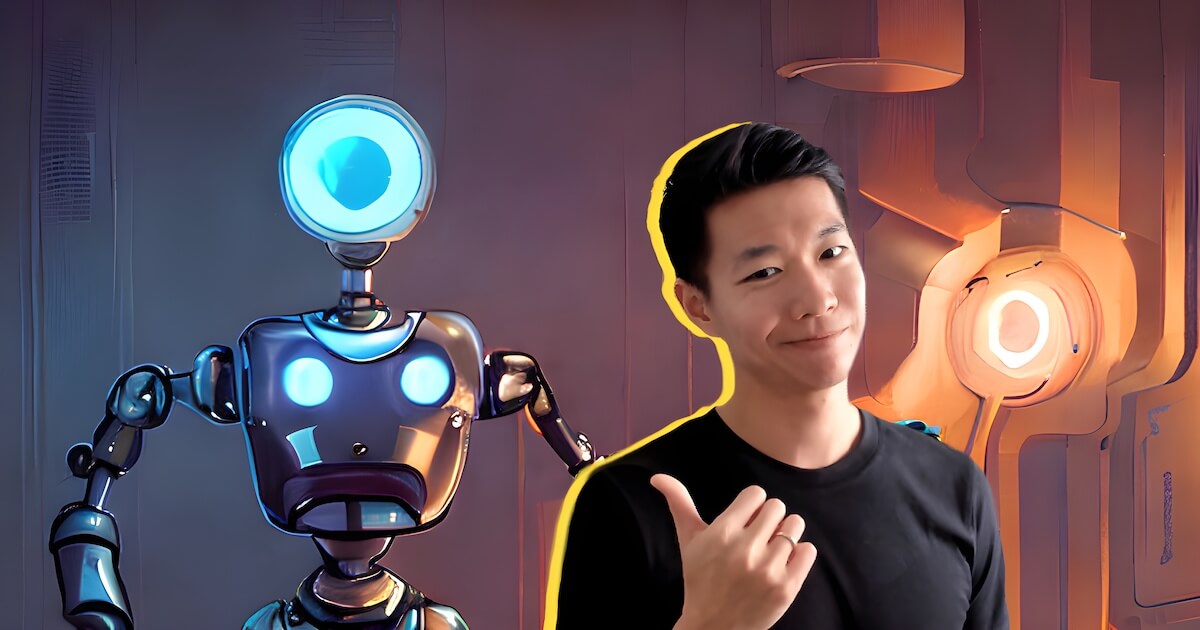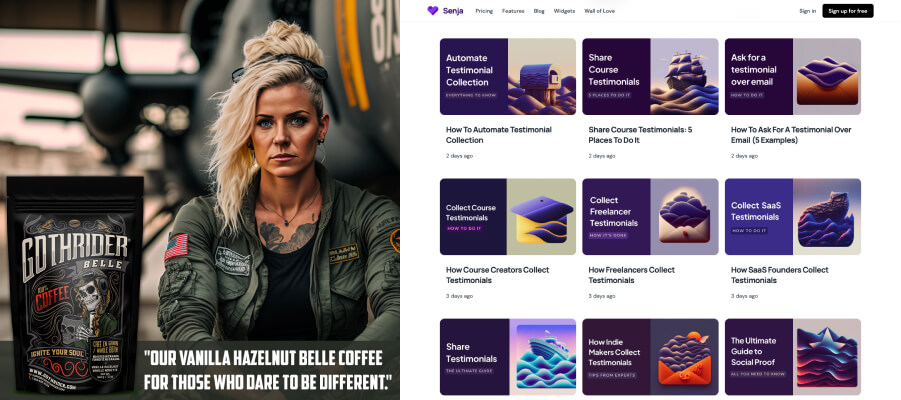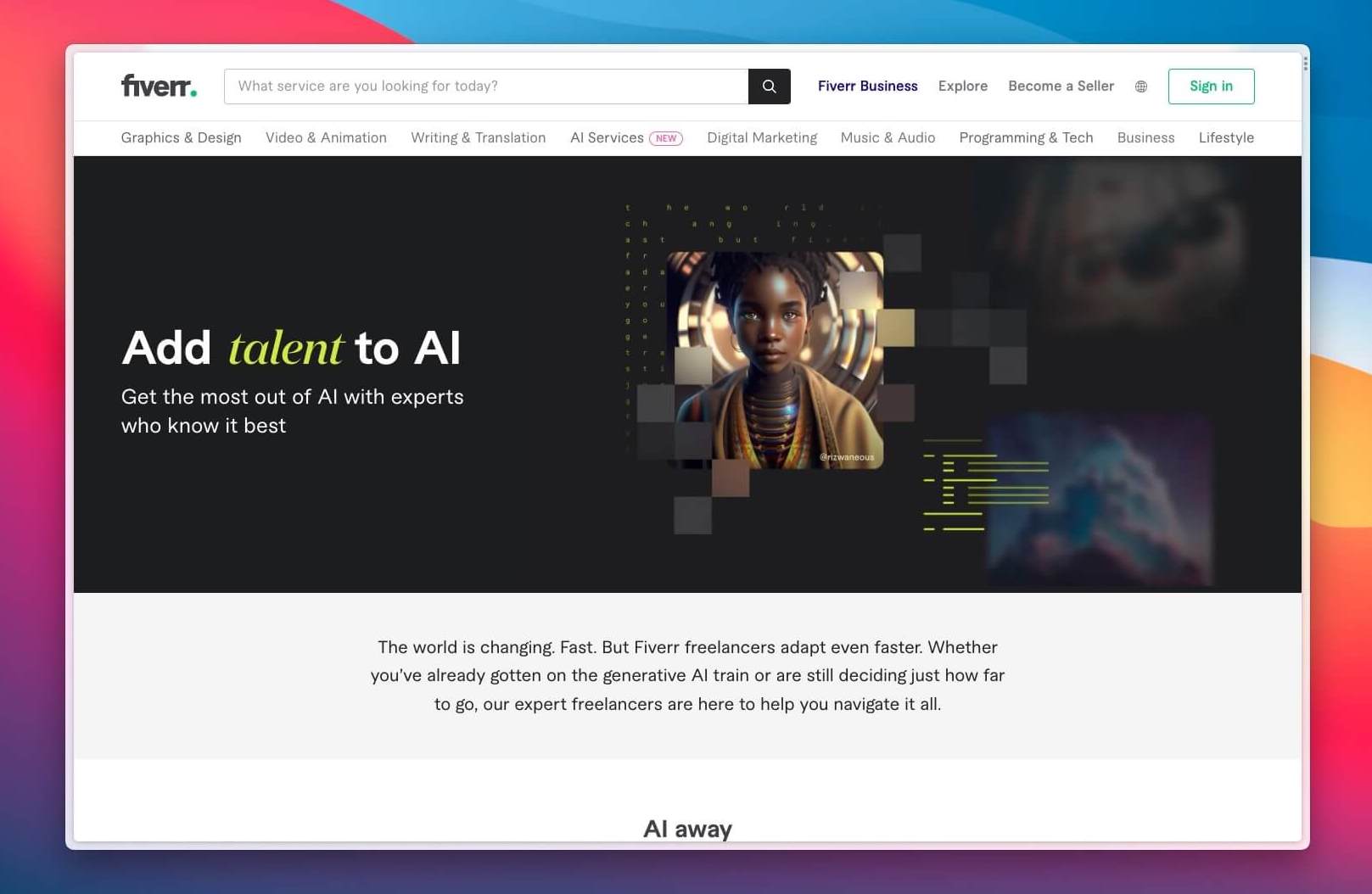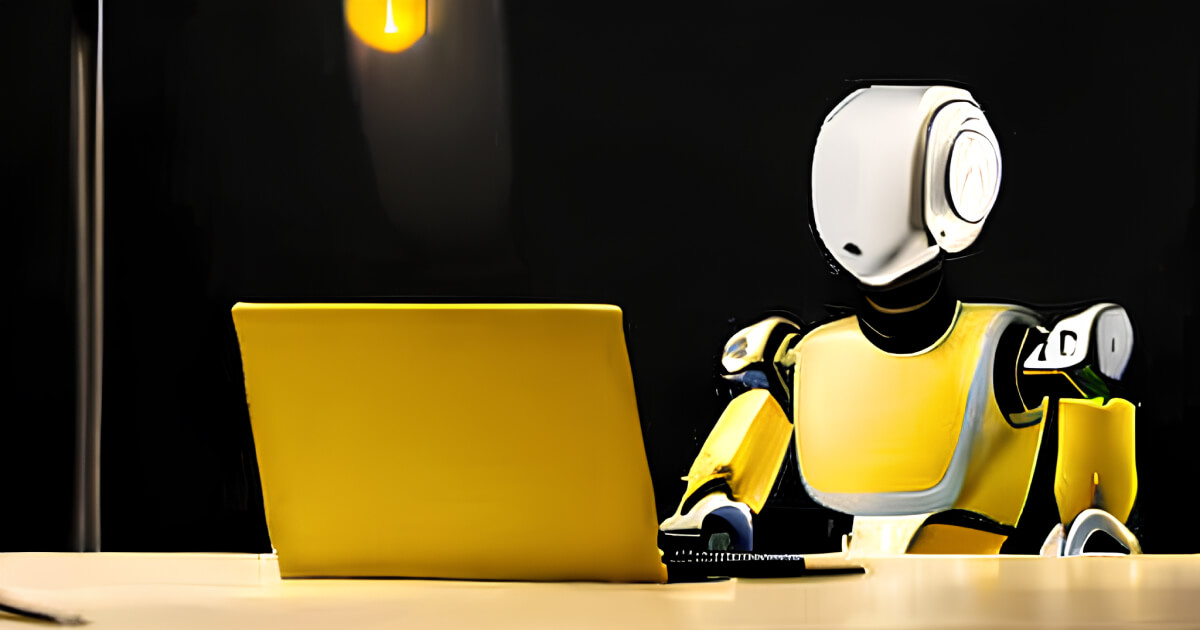Trends/February 2, 2023
Top Marketers Are Already Using AI. Why Are You Not?

Alfred
Co-founder

Here is why you should be learning to use AI tools in your day-to-day work, and how to get started.
“I used AI to help me write an article.”
“In 1 month, it ranked for 47 keywords (many on pages 1 and 2), and got tons of organic social shares,” said Tina Donati, Content Marketing Lead at Alloy Automation.
To be clear, AI didn’t do the work.
Tina interviewed experts, researched statistics, and added her own insights. But she leveraged AI to create outlines, get title ideas, and brainstorm additional sections for the article.
Tina isn’t alone. Marketers are already using AI tools to help them in their daily work:
- Gael Breton of Authority Hacker used ChatGPT to write podcast titles (which outperformed the ones written by his staff).
- Phil Kyprianou of GothRider® Badass Coffee used Midjourney to generate images for his ad campaign.
- Wilson of Senja is using Midjourney to create illustrations for their blog.
- I created part of the blog cover image above with Playground AI.

AI won’t replace you.
But the people who use AI will.
Fiverr even added AI services for image generation, video creation, content editing, and more.

Why we should learn to use AI tools
The short answer is:
AI will become a part of our tools eventually. Popular tools like Canva and Notion have already introduced AI features. Better to master it now than struggle to keep up later.
Here’s the long answer:
1. AI is changing marketing, like social media did
10 years ago, social media marketing became the thing for businesses. Over the years, marketers learned to post text, then images, then videos, then live videos, then TikTok, then Instagram Reels. In my six years at Buffer, a social media management software startup, I watched social media platforms come up with new features every few months. And every time, marketers adapted immediately to grow their reach and maximize their engagement.
AI is a tool, just like how social media is a tool. Social media gave us a new way to connect and interact with our audience; AI is giving us a new way to create content faster and more creatively.
The marketers who got the most out of the social media wave were the ones who dove in early. Remember the good old days when you could get tons of traffic from Twitter or organic reach on Facebook? AI is the next opportunity for us.
2. We are good at some things; AI is good at some things
Just because we love to come up with ideas and create content doesn’t mean we cannot use AI to help us. It doesn’t have to be all or nothing. AI is better than us at certain things but worse than us at others. For example, it cannot tell personal stories or show original research. It also adds random parts to objects in images.
I recently saw this comment by Fabricio Teixeira, the founder of UX Collective, a design publication on Medium:
"We also deprioritize stories that could have been easily written by an AI. Is the author balancing factual (Wikipedia-like) information with their own personal insights, anecdotes, learnings and personality while sharing their expertise? If someone asked ChatGPT to write about the same topic, would they get additional value from reading the version written by a human?”
This applies to all the content we create, from text to images, to videos, and more. We, as humans, can create value for our audience that AI cannot.
But!
AI can write long essays, create images, and come up with creative ideas in just seconds. Ethan Mollick, a professor at the Wharton School of the University of Pennsylvania, tested ChatGPT on several common psychological tests of creativity. His conclusion? “AI is already more creative than humans.”
But I don’t think we should see this as competition. In fact, the strength of AI is that it can help us break through the parts of the creative process that many humans are bad at, and let us become better at generating ideas ourselves.
Sandeep John, Director of Demand Generation at Outplay, and his team are doing just that. They used AI tools to scale their content efforts by three times. “With the right phrases, it helps lay out the foundation of our blog content, and then we go in and add more things.”
I also generated surprisingly good images that I have not thought of, with our AI tool Pebblely.

Why not leverage AI’s speed and creativity and add our unique personal perspectives?
3. We have the perfect skill to use AI
As marketers, we pride ourselves on being wordsmiths. And words… are exactly what AI needs to create good outputs.
It’s not code. It’s English.
AI tools take in a text description and spit out essays, images, and even music. But the results are often terrible on the first try. We would need to refine the “instruction” by rephrasing some parts or adding other words to get better results.
Most people think you can simply tell AI “give me X”. Job done.
No!
International creative director Eric Groza created a viral LinkedIn post about an AI-generated collaboration between Patagonia and IKEA. Check out how much exploration he had to do:
The better you can instruct the AI, the better results you will get.
Now, wouldn’t you say AI is built for us?
Not embracing the next wave (AI in this case) is akin to being the marketer that thought social media would never amount to anything and just kept buying ads in newspapers.
— Brent Stirling, Director of Growth at Carbon6
Harsh but true.
How to learn to use AI tools
Assuming I have convinced you to at least go find out more about AI tools, what now?
I actually built an AI tool with GPT-3 for generating titles, giving feedback on drafts, and repurposing content. In the process, I learned a lot about what AI is capable of and how I can use AI tools well.
But of course, you don’t have to do that. I went through the hard way so that you don’t have to.
1. Subscribe to AI newsletters
A good first step is just to be aware of interesting AI tools related to your work. The AI world is a lot bigger than ChatGPT. There are specialized tools for product images, explainer videos, audio editing, music generation, and more.
For example, Aiza Coronado and her team at CaaSocio have been using Jasper to generate marketing ideas; WordTune to rephrase sentences that feel bland; and ChatGPT for quicker preliminary research.
“What you must pay attention to in order to reap the first-mover advantages of AI is to keep a pulse on the new tools, so you can find and master them before anyone else.”
— Sam Claassen, Head of Growth at SafetyWing
But it can be overwhelming to keep up with all the new AI tools popping up every day. I subscribe to newsletters that help me cut through the noise. Here are three of my favorites:
- Ben’s Bites by Ben Tossell (daily)
- The Neuron by Pete (daily)
- Startup Growth AI by Sam Claassen (weekly)

2. Try it 100 times
Marketers are used to diving into new tools, figuring them out, and getting really good at them. Live videos get more reach? Let’s do more. Twitter threads go viral more easily? We’ll create one every day. Want to get better at TikTok? Post 100 videos.
The same mentality works great for learning to use AI tools.
- ChatGPT can give me content ideas? Try it for a few topics.
- Pebblely can save me time creating product images? Experiment with it for a few products.
- Synthesia can help me create videos from just a script? Well, give it a few scripts.
What you will notice is your first result will be horrible. Just like your first blog post, your first TikTok, your first webinar.
But unlike blog posts, TikTok videos, and webinars, AI tools can give new results immediately. You just need to keep tweaking your inputs to see what gives you better results. Maybe write longer prompts? Use certain keywords? Change your phrasing? See how "professionals" like Eric Groza do it in the video above.
I think it has taken up a couple of weeks of testing to figure out how to lay out the right phrases and categories to bucket the pieces in. I think most tools are fairly easy to learn. We tried out three different tools (Kasper, Copy, and Copymatic) before settling on one.
— Sandeep John, Director of Demand Generation at Outplay
3. Combine it with your existing tools and processes
As mentioned earlier, AI tools aren’t perfect. So we should learn about their limitations—and supplement them with our human touch.
Using the examples above…
- If you used ChatGPT to write a search-engine-optimized blog post, you would want to edit it and run it through Clearscope or Surfer SEO.
- If you used Pebblely to generate marketing assets for your products, you would want to add your brand logo and some copy with Canva.
- If you used Synthesia to generate tutorial videos, you would want to crop the videos into social-media-friendly dimensions with Adobe Express or VEED.
I used Figma to add myself to the AI-generated image above.
AI tools are not at the point where they can do everything end-to-end for us. So if you can take an output from an AI tool and make it even better, your marketing content will be a lot better than people who lazily use whatever their AI tool creates for them.
I have been using Grammarly for spotting mistakes in my writing and Rytr for getting blog ideas, generating outlines, and paraphrasing my words. I like to compare the AI’s suggestions with my own ideas to see if I missed any points.
— Cheryl Teo, Content Marketer at ReferralCandy
Ride the wave. Not let it crush you.
I feel the same excitement as in the mid-90s when the web came, and behind all the problems of low-res graphics, timeouts, and expensive connections, you could see a lot of opportunity coming. It feels like this will be touching the lives of so many knowledge workers behind computer screens these days.
— From a friend of Christoph Janz, Managing Partner at Point Nine Capital
2022 is just the start. AI will continue to change business and marketing—maybe even in ways we cannot imagine now.
It has been a long time since something this exciting changed the way we work and market. Social media was the last big thing, and it has been 10 years.
If you missed the start of the Internet or social media, here’s your chance to be early on the next big thing.
Keep learning

10 Ecommerce AI Tools to Grow Your Business
AI isn't just for writing. Here are tools that use artificial intelligence or machine learning to help you with product images, customer service, retention, and more.

AI Product Photography is Already Better Than You Think
Businesses are already using AI tools to generate images to build their brand and sell their products. Don't get left behind.